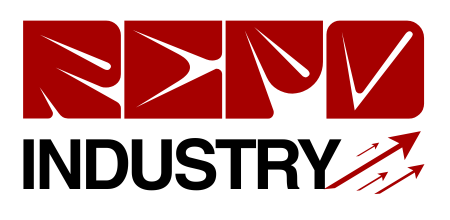Table of Contents
- Introduction to Pipeline Technology
- The Role of Pipeline Technology in Modern Infrastructure
- Technological Advancements Shaping the Future
- Environmental Considerations
- Safety Measures and Innovations
- Case Studies: Successful Pipeline Implementations
- Challenges and Opportunities
- Conclusion: The Road Ahead
Introduction to Pipeline Technology
Pipeline technology represents a critical backbone in the framework of modern infrastructure, serving as an essential conduit for distributing vital resources like water, oil, natural gas, and sewage across expansive regions. These impressive networks do more than just ship resources—they enable virtually every sector of our modern economy, enhancing living standards by delivering essential utilities directly to homes and industries. The evolution of pipelines has mirrored technological progress, incorporating advanced materials, engineering techniques, and digital innovations to boost efficiency and reduce environmental impacts. A crucial part of this evolution includes practices such as phmsa cleaning, which are paramount in maintaining pipeline integrity and ensuring these networks’ continuous and safe operation amidst growing environmental and economic challenges. Additionally, integrating smart sensors and real-time monitoring systems has enhanced the ability to detect leaks and potential risks early, further safeguarding infrastructure and communities. With increasing demands for energy and water, pipelines are poised to play an even more vital role in sustaining global development. As governments and industries collaborate on refining regulations and safety protocols, pipeline technology’s future appears more resilient and sustainable.
The Role of Pipeline Technology in Modern Infrastructure
Within the complex and vast world of infrastructure, pipelines act as the silent but indispensable agents that facilitate the transport of life’s essentials efficiently and securely across long distances. They ensure that necessities such as natural gas, which heats our homes, and water, which are vital for life, are delivered consistently and economically. By significantly decreasing our reliance on less secure and environmentally taxing transportation methods like tankers and railcars, pipelines help mitigate carbon emissions and enhance energy security in a rapidly industrializing world. This operational efficiency supports economic development by stabilizing resource availability and enhancing international trade competitiveness. Pipeline construction and maintenance innovations have bolstered these systems, making them more reliable, secure, and sustainable as global needs evolve.
Technological Advancements Shaping the Future
The trajectory of pipeline technology is being profoundly influenced by digital innovations, mainly through the integration of the Internet of Things (IoT), which has transformed these infrastructures into innovative, responsive systems. Equipping pipeline networks with smart sensors offers unparalleled real-time monitoring and data acquisition capabilities, enabling operators to diagnose and mitigate issues before they escalate preemptively. Through predictive maintenance and complex analytics, pipeline management is entering a new era where operational efficiencies are maximized, helping reduce downtime and operational costs. This approach not only enhances the reliability of supply but also significantly mitigates the risk of failures, sustaining the flow of resources to meet growing international demands.
Environmental Considerations
The construction and operation of pipelines introduce several environmental challenges, necessitating careful planning and advanced solutions to mitigate potential impacts. Environmental stewardship dictates that minimum ecological footprints be left through practices that reduce habitat disruption and resource wastage. Techniques like directional drilling and trenchless technology are innovative methods to limit surface disruptions, thereby protecting wildlife habitats and minimizing visual impact. Meanwhile, innovations in sustainable pipeline materials and robust leak detection systems are integral in reducing emissions and preventing ecological disasters. These ongoing advancements underscore the sector’s commitment to sustainability, ensuring that pipeline infrastructure aligns with global environmental conservation goals and responsible resource management.
Safety Measures and Innovations

Ensuring the safety of pipelines is critical to their operation, with industry players constantly innovating to protect these critical infrastructures. Drone technology for inspections has redefined how pipelines are monitored, providing comprehensive coverage and detailed analyses with unprecedented efficiency. Drones, equipped with high-resolution cameras and sensors, can quickly survey vast pipeline stretches, capturing essential data needed to address potential threats such as corrosion and leakage proactively. Innovations in pipeline coatings and anti-corrosion materials further bolster safety measures, providing enhanced protection against environmental factors that jeopardize structural integrity. Combined, these technologies ensure safer, more reliable pipelines that can handle the pressures of transporting essential resources across complex geographies.
Case Studies: Successful Pipeline Implementations
Successful pipeline implementations worldwide offer insightful examples of how advanced technologies and strategic planning can lead to improved operational outcomes. Consider the Trans Anatolian Natural Gas Pipeline (TANAP), which exemplifies design and technology integration excellence. With an extensive telecommunication network documenting real-time data on operational status across expansive terrains, TANAP underscores the efficacy of modern engineering and technological foresight in achieving secure and efficient energy distribution. Such projects achieve high safety and environmental compliance standards and provide invaluable lessons and benchmarks for future pipeline endeavors. They demonstrate how advanced planning and technological integration can exceed operational expectations and foster infrastructure advancements.
Challenges and Opportunities
The pipeline industry’s future is filled with challenges requiring innovative solutions and strategic foresight. Regulatory compliance continues to evolve, particularly in environmental preservation and safety standards, posing challenges and opportunities for innovation. Engaging stakeholders through transparent communication and integrating emerging technologies can transform these challenges into stepping stones for sustainable growth and operational efficiency. By leveraging cutting-edge technology and forming strategic partnerships with governments, academia, and industry peers, the sector can harness its full potential, expanding its reach to new markets and improving resource management. The ongoing evolution presents challenges and a rich tapestry of opportunities for those who dare to lead.
Conclusion: The Road Ahead
The future of pipeline technology is poised at an intersection of innovation and sustainability. As global demands for energy and other vital resources grow, embracing new technologies and sustainable practices becomes increasingly imperative. Strategic partnerships and collaboration among various stakeholders will be essential in harnessing technological innovations, ensuring they are deployed effectively and responsibly. By aligning with evolving trends in global energy infrastructure, the pipeline industry can meet its challenges head-on, securing a future that is resilient and efficient and aligned with the global push for sustainability and environmental responsibility.











